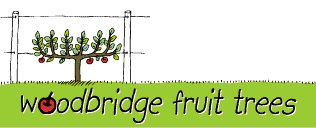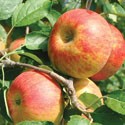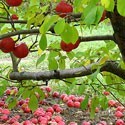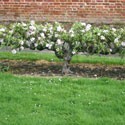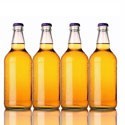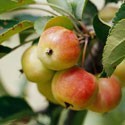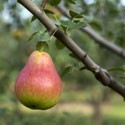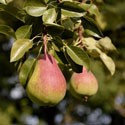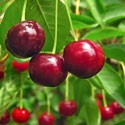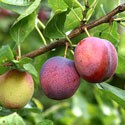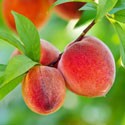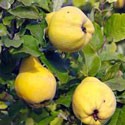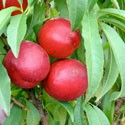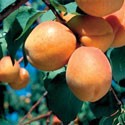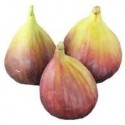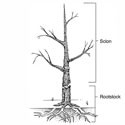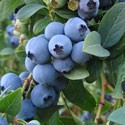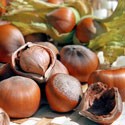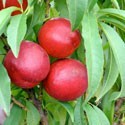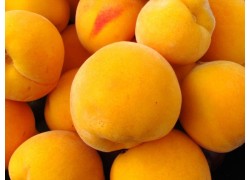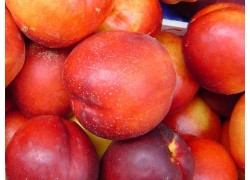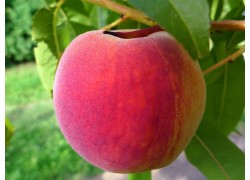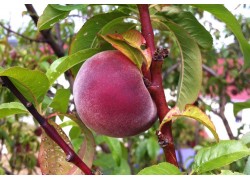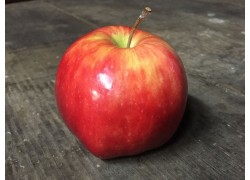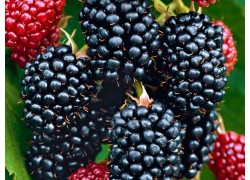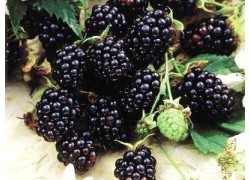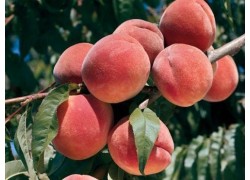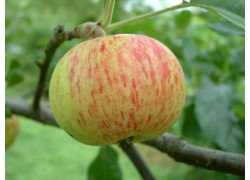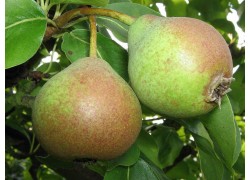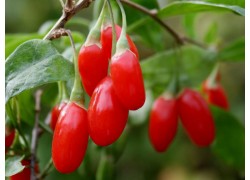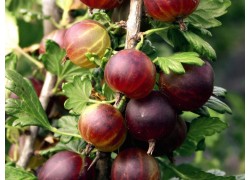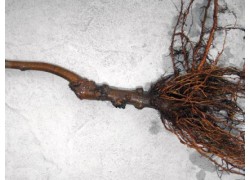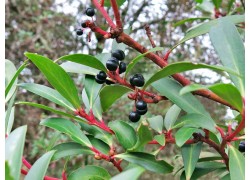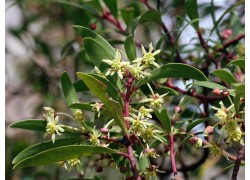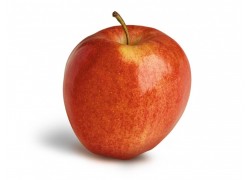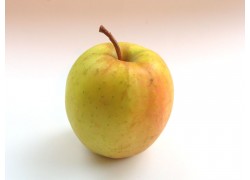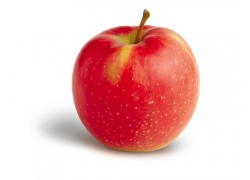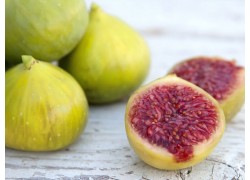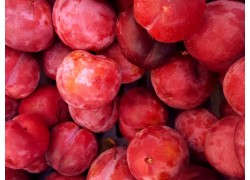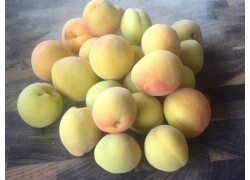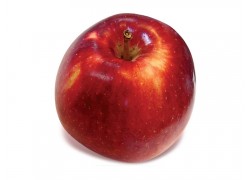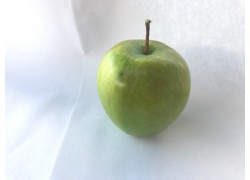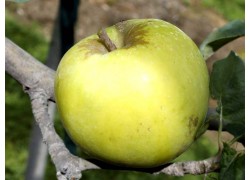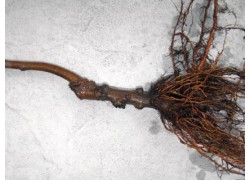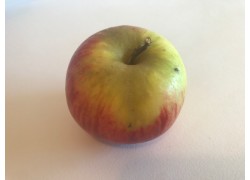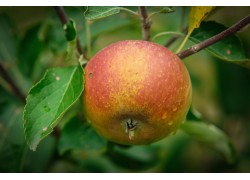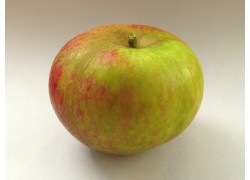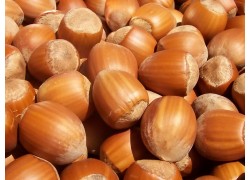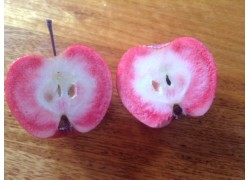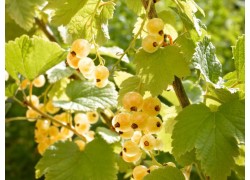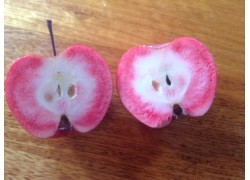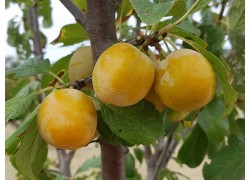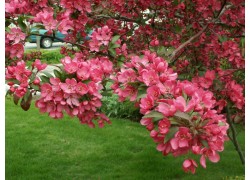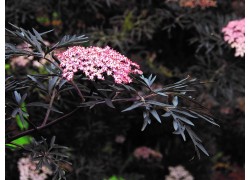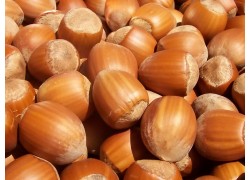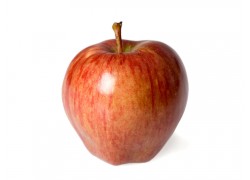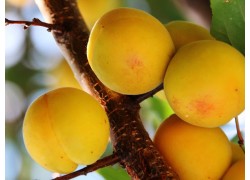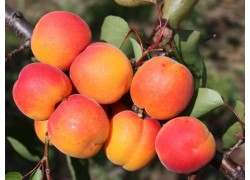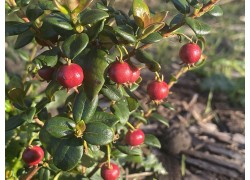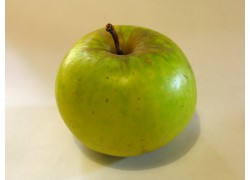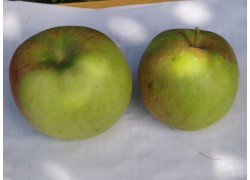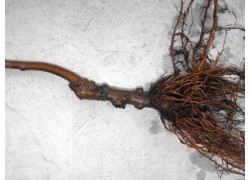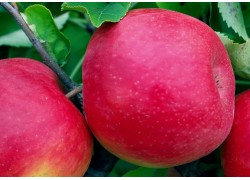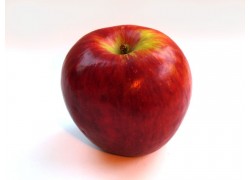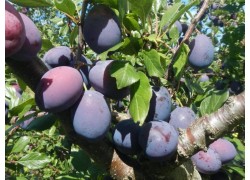No products
Filter
Our range of dwarfing and non-dwarfing fruit trees, nuts, berries.
Fruit Trees There are 256 products.
Subcategories
-
Dwarf Apples
Heritage apple varieties on DWARF rootstock. These apples are ideal for back yards, small orchards, espaliers or anywhere where space is tight. Varieties ripen from Christmas to July providing 6 months of fruit. Wee included some more recent varieties as well as historic ones. There are excellent eating apples, cookers, big, small, common and unusual. Something for every occasion.
-
Semi-dwarfing Apples
Heritage apple varieties on SEMI-DWARFING rootstock. These apples are ideal a free-standing tree, rather than espaliering. They are a little more vigorous than our dwarfing trees.
-
Stepover Apples
Step-over apple trees on EXTRA-DWARFING rootstocks. These highly sought-after trees can make productive hedges half a metre in height. Ideal for edging garden and vegetable beds, or a striking ornamental hedge. We tend to select later ripening varieties so that the fruit are hanging after the leaves have fallen. See our article on step-overs for more information.
-
Cider Apples
Cider apple trees on SEMI-DWARFING rootstocks. These are a selection of specialty cider varieties from the English and French cider traditions. They make superior cider (in the right hands!) and are to the cider world as to the Pinot Noir or Chardonnay are to the world of wine.
-
Crab Apples
Crab apple trees on SEMI-DWARFING rootstocks. These are considered as ornamentals, but can be used in juicing to offset the sweeter apple or pear. Highly regarded as pollinators for apple varieties because of their prolific flowering.
-
Dwarf Pears
Pear trees on DWARFING rootstocks. Dwarfing forms allow these pears to bear much earlier and make more manageable trees than the huge old pear trees seen on old farms. "Pears for your heirs" was the old adage pointing to their longevity, slowness of growth and bearing, and eventual large sized tree. The French (and Belgians) have been responsible for bringing pear culture to it's peak in the 1700s.
-
Perry Pears
Select from our range of Perry pears on Dwarfing rootstocks.
-
Cherries
Cherry trees on DWARFING rootstocks. The sweet cherry varieties we grow have been developed from the European bird cherry (Prunus avium), while the sour cherries (which are still tangy as well as sweet) have been developed from Prunus cerasus, a wild cherry from Asia. Cherries definitely need protection from birds and many growing methods have been developed to accommodate this eg. espalier, spanish bush or fans so that they can be netted.
-
Plums
Plum trees on NON-DWARFING rootstocks. The so-called European Plums we sell were introduced into Europe from Syria and Persia and are the product of long selection and development over the last 1000 years. Plums have pale greenish yellow flesh and rich sugary flavour, ripening in February. Generally two varieties are needed for cross pollination, although there are some that are self fertile. Esplaiering these shuold be done on a fan shape only.
-
Peach
Old style peaches on non-dwarfing rootstock. These are best grown as free-standing trees to 3-4m but can be espaliered in a FAN shape effectively keeping it below 1.8m.
-
Quinces
Quince trees on DWARFING rootstocks. Closely related to the pear, quinces are attractive trees, and the fruit wonderfully aromatic - treasured for cooking, tarts, preserves and jellies.
-
Nectarine
Old style Nectarines on non-dwarfing rootstock. These are best grown as free-standing trees to 3-4m but can be espaliered in a FAN shape effectively keeping it below 1.8m.
-
Apricots
Apricot trees on SEMI-DWARFING rootstocks. These are best grown as free-standing trees to 3-4m but can be espaliered in a FAN shape effectively keeping it below 1.8m. The Moorpark produces a smaller tree, and can be kept smaller on an espalier as well. Medlars produce small trees or can be espaliered easily to 1.5m.
-
Figs
Figs on non-dwarfing rootstocks. Knows for their sensuous fruit both fresh and dried. Figs like long hot summers but not too dry, with well drained soils, preferrably out of the wind. They tolerate being potted. -
Rootstocks
Rootstocks are used for grafting and budding onto. If you know or want to learn how to graft or bud, you can propagate yourself. This year we offer a handful of rootstocks, but sorry no quince or pears.
-
Berries
A selection of raspberries, blackberries, logans, blueberries, currants and other edible berries for the garden.
-
Nut Trees
Hazelnuts and almonds. Hazels are great for mass hedging, but can be trained into a small tree. Almond pollination can be tricky but this self-fertile one allows you to grow plenty with just one tree.
-
Dwarf Stone Fruit
Dwarfing Stone fruit - Peaches, Apricots, Plums, Nectarines. Idea for small espaliers or pots.
-
Golden Queen Peach Ripens: February - March
A yellow-fleshed, yellow skinned late ripening peach. Firm clingstone flesh, good when eaten fresh, but amazing stewed, preserved, etc when the flavour really comes out. A NZ breed.
$39.50 -
Red Gold Nectarine Ripens: February - March
A red-skinned, yellow fleshed nectarine, freestone that ripens later in the season. Good flavour and a firm flesh. Self-fertile.
$39.50 -
Redhaven Peach Ripens: February
An early to mid seasoned peach. Yellow fleshed, with excellent flavour. Red skin, reasonably resistant to leaf curl. Self-fertile.
$39.50 -
Portugal Ripens: March - April
Medium sized fruit, with good flavoured pulp that cooks down to pink. Attractive pale pink flowers.
$29.50 -
Fragar Peach Ripens: February
A white fleshed cling-stone peach from an old tree in a garden in Cygnet, Tasmania. Absolutley amazing tasting peaches, that produces masses of medium sized fruit starting February over about three weeks. Beautiful red skin. Self fertile.
$39.50 -
Ruby Neige Dwarfing Ripens: June - July
A stunning looking glowing red apple, round in shape, with very white flesh. Late ripening, amazing crunch and very good flavour. Low acid.
$39.50 -
Thornless Blackberry Ripens: March
Long elongated blackberries witout the hassle of thorns, ripening after the Logans and summer raspberries. For best taste and sweetness, leave the fruit until they come off without effort. Vigorous plant, preferring a trellis or wire for best results.
$18.00 -
Youngberry Ripens: February - March
Delicious large roundish berries. Ripe when deep black with a mat (not shiny) surface. Grows as a spreading bramble, with trailing canes reaching up to 3m in length. Fewer Spines than Boysenberry. A blend between a Raspberry, Blackberry, and a Dewberry. Youngberry fruit on second year canes. developed by BM Young in Louisiana USA 1905.
$18.00 -
July Elberta Ripens: January - February
A peach bred in the 1930's by Luther Burbank. An early peach, freestone with sweet juicy yellow flesh. A Good bearer. Orangy skin. Self-fertile.
$39.50 -
Frequin Rouge Amer Ripens: March - April
A medium sized apple, flat in shape, with a yellow / green / red stripe. Ripens mid to late season. Bittersweet, high tannin levels. Regarded as a very important in French cider making.
$39.50 -
Moorcroft Ripens: March - April
A medium sized green pear with a little russet. Good for making perry, with medium acid and medium tannin. Mid-late season.
$42.50 -
Goji berry Ripens: January - February
This Asian berry has become popular as a dried fruit, fashionable for it's vitamin and anti-oxidant properties. Lycium barbarum forms a shrub up to 2.5m high, and fruits late summer, branches often just full of the bright red fruit.
$18.00 -
Gooseberry "captivator" Ripens: January - February
This gooseberry forms a thornless bush up to 1.5m, with good quality tasting fruit that ripen to a orangy-red papery veined skin.
$18.00 -
Apple Rootstocks (Extra Dwarfing M27)
An extra-dwarfing rootstock for growing and propagating apples and crabapples onto. Suitable for stepovers. These have been grown on for one year after harvesting from a stoolbed, so have established root systems.
$13.00 -
Tasmanian Pepperberry - FEMALE Ripens: March
A native to Tasmania (Tasmannia lanceolata) forming a shrub or small tree 1-3m. Grown for it's edible pepper corns, which when dried are a great substitute for black pepper. Form an attractive tree, with red stem and small ovate dark green peppery leaves. Small white flowers in summer, forming berries in Autumn. The female forms the berries, but needs a...
$23.00 -
Tasmanian Pepperberry - MALE
A native to Tasmania (Tasmannia lanceolata) forming a shrub or small tree 1-3m. This is the male required for pollination. See the female listing for more information. NO DELIVERY TO WA as these are sent in pots with soil.
$23.00 -
Royal Gala Semi-dwarfing Ripens: February - March
A medium sized red striped yellow apple with a terrific crunch and reliably pleasant sweet flavour. It's become quiet well known in Australia, being for sale in many of our shops and supermarkets. It's actually about 90 years old, developed by New Zealander John Kidd in the 1930's as a cross between a Golden Delicious and another one of his selections,...
$39.50 -
Golden Delicious Semi-dwarfing Ripens: March - April
Allowed to ripen on the tree, the Golden Delicious develops into a large yellow coloured apple bursting with crunch, juice and sweetness. Often a splash of russet near the stem, tiny specks over the skin and an orange blush on the sunny side. Stores well. Discovered in USA at the end of the 1800's. An entirely better experience when left to ripen on the...
$39.50 -
Jonagold Semi-dwarfing Ripens: May - June
A cross between Golden Delicious and Jonathan, Jonagold grows medium to large red fruit of intense flavour. The creamy yellow flesh is light, terrifically crunchy and memorably juicy. Solid Red skin with some yellow tones, and maybe a little stripe. Creamy The flavour has the tantalising taste of both parents. Ripens quite late and excellent keeper. If...
$39.50 -
Preston Prolific Fig Ripens: February
A vigorous and heavy cropping variety. Skin is creamy yellow with and amber, sweet flesh. Harvested February to March. Use for fresh fruit, drying and jam. Figs prefer dry hot summers but need water when fruiting. Prefer well drained but fertile soil. Full-sun. Self-Pollinating.
$41.00 -
Satsuma Ripens: February
Satsuma is a well known red fleshed Japanese plum, with medium-large sized fruit and a deep red skin. A prolific bearer, partially self-fertile and pollinates is is pollinated by other japanese plums.
$39.50 -
Prunus Mume "Bungo" Ripens: mid December - January
NOTE: Maximum 1 per customer please. Prunus mume or ume is a japanese "plum" (probably more of an apricot) used in making japanese plum wine and preserves. This variety was sourced from Rob Bester in Taroona, Tasmania. Vigorous tree, high quality fruit almost like a small apricot. This variety hasnt been tested elsewhere, although we're pretty sure like...
$39.00 -
Empire Dwarfing Ripens: March
Empire is a cross between Mcintosh and Red Delicious, a result of an extensive breeding program in Geneva, New York in 1945. It's a medium to large apple, very red and regular in shape, almost perfectly round. It has an uncomplicated flavour, sweet cruncy slightly creamy flesh. Interestingly, it's sibling "Spartan" which has the same parentage is quite...
$39.50 -
Goldsmith Dwarfing Ripens: June - July
Goldsmith is a cross between Granny Smith and Golden Delicious. Completely green in colour, the shape is destincly less round than a Granny and more that of a golden delicious. The flavour is also a remarkable mix of the two - one can appreciate the acid of the Granny, but the sweet of the Golden.
$39.50 -
Lodi Dwarfing Ripens: January
Lodi is one of the early apples, a medium sized apple light green to greeny-yellow when ripe. Like all early apples, they just dont keep, but their sprightly flavour signifies the beginning of the apple season, and make them worth growing. Thought to be an offspring of white transparent (and Montgomery), and has probably superior in both flavour and shelf...
$39.50 -
Quince Rootstocks (Dwarfing C)
A dwarfing Quince C rootstock for propagating quinces and compatible pears. These have been grown on for one year after harvesting from a stoolbed, so have established root systems.
$13.00 -
Elstar Dwarfing Ripens: March
A very attractive almost perfectly round apple, mostly red, with an occasional stripe but a destinctive collar of russeted yellow around the stem. Very good eating apple with good flavour and crunch. Originated in the Netherlands, in the town of Elst in the 1950's. It's a Golden Delicious crossed with on otherwise hardly known apple called Ingrid Marie.
$39.50 -
Rattling Cox's Orange Pippin Dwarfing Ripens: February - March
This must be the world's most revered apple, originating in Buckinghamshire England in 1825, thought to be an offspring of Ribston Pippin. There are many different cultivars of this apple, and this one is one of the oldest - very tasty but smaller fruit with russeted yellow/orange skin. Crisp juicy flesh when ripe, with a richness that is difficult to...
$39.50 -
Cox's Orange Pippin Step-over Ripens: February - March
This must be the world's most revered apple, originating in Buckinghamshire England in 1825, thought to be an offspring of Ribston Pippin. An attractive strip yellow/orange skin on a yellow background with the characteristic cox's russet around the collar. Crisp juicy flesh when ripe, with a richness that is difficult to describe except it has all the...
$42.50 -
Lewis Hazelnut Ripens: March
Lewis is an excellent tasting nut with an elongated shape. Pollination of hazelnuts is complex, and to make it easy, we recommend having 3 other varieties to set fruit. Hazelnuts produce a large bush that suckers, although can be trained / pruned into a low tree with a single stem.
$22.00 -
Tegan Blue Ripens: February
Another Japanese plum - Sweet, juicy and soft with yellow flesh and a bluey purple skin. Needs to be pollinated by another Japanese plum e.g. 'santa rosa'.
$39.50 -
Boysenberry Ripens: February - March
Amazing tasting large plump black / purple berries. Grows as a spreading bramble, with trailing canes reaching up to 3m in length. A cross between a blackberry, dewberry, raspberry and loganberry. Lots of spines but totally worth it! Boysenberries fruit on second year canes. Probably from 1920 USA.
$18.00 -
Magnus Summer Surprise Dwarfing Ripens: February - March
The fruit are quite attractive - bright red and medium in size, but that is the red flesh and white core are quite remarkable when bitten into. The flavour is sweet and the tree crops heavily. Like its parent, the Huonville Crab, it has purple/ green leaves and stem. Quite remarkable. This apple is the result of my fathers' efforts into apple breeding....
$39.50 -
Whitecurrant Ripens: February - March
A white version of a redcurrant. Large translucent white berries ripen on bunches and can be easily tickled off when ripe. Crop heavily and over a long season. Currnats have a balance of acid and sweet, can be eaten fresh and used in drinks, jams, pies. Birds dont attack these as strongly as the red currants.
$16.00 -
Magnus Summer Surprise Semi-Dwarfing Ripens: February - March
The fruit are quite attractive - bright red and medium in size, but that is the red flesh and white core are quite remarkable when bitten into. The flavour is sweet and the tree crops heavily. Like its parent, the Huonville Crab, it has purple/ green leaves and stem. Quite remarkable. This apple is the result of my fathers' efforts into apple breeding....
$39.50 -
Goldengage Ripens: February - March
About the size of a green gage, but golden yellow, with sweet golden flesh. Excellent eaten fresh but also great for bottling and preserving. Thought to be originally French late discovered around 1856. Self fertile but will do better with another English plum nearby eg. Damson, Angelina, Green gage. Ripens February.
$39.50 -
Malus x purpurea
Forms a spreading densly branched tree, producing amazing masses of reddish purple blossom in Spring. During Autumn, produces a lot of small red fruit, that are like little cherries. This crab apple is planted as a focal point for its blossom rather than the fruit which arent really usable.
$39.50 -
Elderberry "Black Lace" Ripens: March - April
An Elderberry tree is fast growing with very light wood growing to 4-5m tall. This cultivar has richly coloured burgundy black foliage, and ladened with pinky white flower clusters (elderflower) that turn into black berries (elderberries). When happy, it will tend to form many trunks. Both the flowers and the berries are used to make a variety of...
$27.50 -
Tonda di Gifoni Hazelnut Ripens: March
Tonda di Giffoni is an excellent tasting nut with rounded kernel. Pollination of hazelnuts is complex, and to make it easy, we recommend having 3 other varieties to set fruit. Hazelnuts produce a large bush that suckers, although can be trained / pruned into a low tree with a single stem.
$22.00 -
Red Delicious (Hi Early) Dwarfing Ripens: March
A very famous apple - a classic red apple with a distinctive shape. Red, with a yellow stripe, with a mild sweet flavour, and firm flesh. Discovered as a chance seedling in Iowa 1880 where it was called Hawkeye, and later sold to Starks Brothers who renamed it Delicious. It has enjoyed huge success as a commercial apple, up to as recently as 10-20 years...
$39.50 -
Trevatt Ripens: January - February
A self-fertile sweet apricot with good-quality fruit, suitable for eating fresh, preserving, drying, etc. A orange/yellow skinned apricot with good flavour. These can be espaliered in a Fan shape only or be grown on a trellis. See the article on Apricots for details.
$39.50 -
Moorpark Apricot DWARFING Ripens: January - February
DWARFING variety makes this tree more suitable for Espaliering that its non dwarfing counterpart. Our favourite well-know old-style apricot with great flavour. Unlike the more modern varieties, the fruit are a little smaller but the flavour more intense. A classic apricot colour - orange with a red blush on the sunny side. Does well in dry summers. Makes...
$49.00 -
Myrtus Berry (chillean guava) Ripens: March - April
Myrtus Berry (Ugni molinae), also known as chillean guava and strawberry myrtle. A low perennial bush with delicate small guava shaped red fruit that ripen in late March - mid April. The fruit are sweet and beautifully flavoured, small (5-6mm) in size. Great eaten fresh, cooked and dry well. The plant forms a dense evergreen low bush up to 50cm - easily...
$18.00 -
Freyberg Step-Over Ripens: April
An amazing apple, drawing qualities from both it's parents - Golden Delicious and Cox's Orange Pippin. So it's easy to see why is so widely enjoyed. Medium sized fruit, the skin a lovely greenish yellow and has the tiny russet fleck similar to a Golden. It ripens midseason and hangs well on the tree. The taste is almost spicy and there is just a hint of...
$42.50 -
-
Pear Roostock (beurre hardy on Quince C)
A beurre hardy pear grafted onto dwarfing Quince C rootstock for propagating pears that are not compatible with quince. This allows "interstemming" to bridge the gap between the pear scion and the quince rootstock. These have been grown on for two years, so more expensive than other roostocks. Established root system.
$19.00 -
Fuji (RED) Semi-Dwarfing Ripens: June - July
A well known variety developed in Japan from it's parent Red Delicious. An attractive red skin, crisp yellowish flesh, uncomplicated deep sweet flavour and is always predictably juicy. Medium to large sized fruit. Fuji stores well - improving in quality and flavour. A thoroughly modern apple, and one of the latest maturing varieties. Suitable for...
$39.50 -
Elderberry Ripens: March - April
An Elderberry tree is fast growing with very light wood growing to 4-5m tall. This common cultivar has green foliage and white flowers, white flower clusters (elderflower) that turn into black berries (elderberries). When happy, it will tend to form many trunks. Both the flowers and the berries are used to make a variety of cordials, wines, relishes,...
$18.00 -
Democrat Dwarfing Ripens: June - July
The red form of Democrat. For a long time Tasmania's mainstay export apple up until the 1980's, of a cannonball consistency and excellent keeping qualities. When left to fully ripen on the tree they are a great eating apple. Brilliant red skin and a crunchy flesh. Quite a sight when all the leaves have fallen and the red orbs are still hanging. It's...
$39.50 -
Robe de Sergeant Plum DWARFING Ripens: February - March
A European prune with elongated purple fruit yellow flesh, freestone. Ripens mid season. Prunes are good eaten fresh but come into their own when cooked in pies, stewed or preserved. Pollinated by other European plums.
$49.00
